| Listing 1 - 10 of 10 |
Sort by
|
Book
Year: 2005 Publisher: [Idaho Falls, Idaho] : Idaho National Laboratory,
Abstract | Keywords | Export | Availability | Bookmark
 Loading...
Loading...Choose an application
- Reference Manager
- EndNote
- RefWorks (Direct export to RefWorks)
High temperature electrolysis. --- Water --- Hydrogen as fuel --- Hydrogen industry. --- Electrolysis --- Research
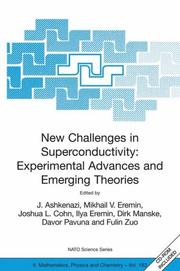

ISBN: 1402030835 Year: 2005 Publisher: Dordrecht Springer
Abstract | Keywords | Export | Availability | Bookmark
 Loading...
Loading...Choose an application
- Reference Manager
- EndNote
- RefWorks (Direct export to RefWorks)
High temperature superconductivity --- Congresses --- Condensed matter --- Congresses --- Particles (Nuclear physics) --- Congresses
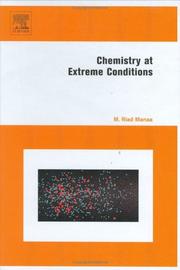
ISBN: 9780444517661 0444517669 0124065554 9786610638253 1280638257 0080456995 9780080456997 9781280638251 661063825X Year: 2005 Publisher: Amsterdam ; Boston : Elsevier,
Abstract | Keywords | Export | Availability | Bookmark
 Loading...
Loading...Choose an application
- Reference Manager
- EndNote
- RefWorks (Direct export to RefWorks)
Chemistry at Extreme Conditions covers those chemical processes that occur in the pressure regime of 0.5-200 GPa and temperature range of 500-5000 K and includes such varied phenomena as comet collisions, synthesis of super-hard materials, detonation and combustion of energetic materials, and organic conversions in the interior of planets. The book provides an insight into this active and exciting field of research. Written by top researchers in the field, the book covers state of the art experimental advances in high-pressure technology, from shock physics to laser-heating techniques t
High pressure chemistry --- High temperature chemistry --- Chimie des hautes pressions --- Températures, Hautes --- High pressure chemistry. --- High temperature chemistry. --- Extreme environments. --- Environments, Extreme --- Ecology --- Thermochemistry --- Chemistry, Physical and theoretical --- High pressure (Science)
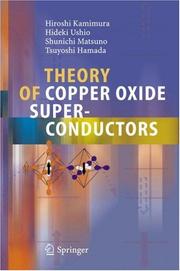
ISBN: 1280262664 9786610262663 3540276327 3540251898 3642064345 Year: 2005 Publisher: Berlin ; New York, N.Y. : Springer,
Abstract | Keywords | Export | Availability | Bookmark
 Loading...
Loading...Choose an application
- Reference Manager
- EndNote
- RefWorks (Direct export to RefWorks)
This is an advanced textbook for graduate students and researchers wishing to learn about high temperature superconductivity in copper oxides, in particular the Kamimura-Suwa (K-S) model. Because a number of models have been proposed since the discovery of high temperature superconductivity by Bednorz and Müller in 1986, the book first explains briefly the historical development that led to the K-S model. It then focuses on the physical background necessary to understand the K-S model and on the basic principles behind various physical phenomena such as electronic structures, electrical, thermal and optical properties, and the mechanism of high temperature superconductivity.
Copper oxide superconductors. --- High temperature superconductors. --- High temperature superconductivity. --- High critical temperature superconductivity --- High Tc superconductivity --- Superconductivity --- Materials at low temperatures --- Superconductors --- Physics. --- Superconductivity. --- Superconductors. --- Strongly Correlated Systems, Superconductivity. --- Superconducting materials --- Superconductive devices --- Cryoelectronics --- Electronics --- Solid state electronics --- Electric conductivity --- Critical currents --- Superfluidity --- Natural philosophy --- Philosophy, Natural --- Physical sciences --- Dynamics --- Materials
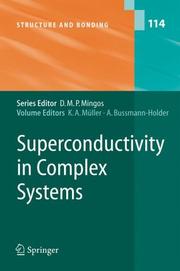
ISBN: 9783540231240 3540231242 3540314997 Year: 2005 Publisher: Berlin, Heidelberg : Springer Berlin Heidelberg : Imprint: Springer,
Abstract | Keywords | Export | Availability | Bookmark
 Loading...
Loading...Choose an application
- Reference Manager
- EndNote
- RefWorks (Direct export to RefWorks)
Superconductivity. --- High temperature superconductors. --- Supraconductivité --- Supraconducteurs à hautes températures --- Chemistry. --- Chemistry, inorganic. --- Inorganic Chemistry. --- Superconductivity, Superfluidity, Quantum Fluids. --- Superconductivity --- High temperature superconductors --- Inorganic Chemistry --- Physical & Theoretical Chemistry --- Chemistry --- Physical Sciences & Mathematics --- Inorganic chemistry --- Inorganic chemistry. --- Superconductors. --- Strongly Correlated Systems, Superconductivity. --- Electric conductivity --- Critical currents --- Superfluidity --- Physical sciences --- Superconducting materials --- Superconductive devices --- Cryoelectronics --- Electronics --- Solid state electronics --- Inorganic compounds --- Materials --- Chemistry, Inorganic.
Book
ISBN: 0780393481 1509097023 9781509097029 Year: 2005 Publisher: [Place of publication not identified] IEEE
Abstract | Keywords | Export | Availability | Bookmark
 Loading...
Loading...Choose an application
- Reference Manager
- EndNote
- RefWorks (Direct export to RefWorks)
Millimeter wave devices --- Infrared technology --- Far infrared lasers --- Free electron lasers --- High temperature superconductors --- Engineering & Applied Sciences --- Applied Physics --- Far infra-red lasers --- Far infrared masers --- Infrared sources --- Lasers
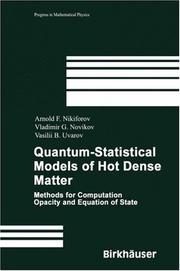
ISBN: 128026375X 9786610263752 3764373466 3764321830 Year: 2005 Publisher: Basel ; Boston : Birkhauser Verlag,
Abstract | Keywords | Export | Availability | Bookmark
 Loading...
Loading...Choose an application
- Reference Manager
- EndNote
- RefWorks (Direct export to RefWorks)
In the processes studied in contemporary physics one encounters the most diverse conditions: temperatures ranging from absolute zero to those found in the cores of stars, and densities ranging from those of gases to densities tens of times larger than those of a solid body. Accordingly, the solution of many problems of modern physics requires an increasingly large volume of information about the propertiesofmatterundervariousconditions,includingextremeones. Atthesame time, there is a demand for an increasing accuracy of these data, due to the fact thatthereliabilityandcomputationalsubstantiationofmanyuniquetechnological devices and physical installations depends on them. The relatively simple models ordinarily described in courses on theoretical physics are not applicable when we wish to describe the properties of matter in a su?ciently wide range of temperatures and densities. On the other hand, expe- ments aimed at generating data on properties of matter under extreme conditions usually face considerably technical di?culties and in a number of instances are exceedingly expensive. It is precisely for these reasons that it is important to - velop and re?ne in a systematic manner quantum-statistical models and methods for calculating properties of matter, and to compare computational results with data acquired through observations and experiments. At this time, the literature addressing these issues appears to be insu?cient. If one is concerned with opacity, which determines the radiative heat conductivity of matter at high temperatures, then one can mention, for example, the books of D. A. Frank-Kamenetskii [67], R. D. Cowan [49], and also the relatively recently published book by D.
Quantum statistics. --- High temperature plasmas. --- Equations of state. --- Plasma density. --- Density, Plasma --- Plasma (Ionized gases) --- Equation of state --- Chemistry, Physical and theoretical --- Matter --- Hot plasmas --- Plasmas, High temperature --- Gases at high temperatures --- Quantum statistical mechanics --- Matrix mechanics --- Statistical mechanics --- Wave mechanics --- Properties --- Physics. --- Condensed matter. --- Condensed Matter Physics. --- Natural philosophy --- Philosophy, Natural --- Physical sciences --- Dynamics --- Condensed materials --- Condensed media --- Condensed phase --- Materials, Condensed --- Media, Condensed --- Phase, Condensed --- Liquids --- Solids


ISBN: 1402030835 1402030843 1402030851 9786610460380 1280460385 Year: 2005 Volume: v. 183 Publisher: Dordrecht Springer
Abstract | Keywords | Export | Availability | Bookmark
 Loading...
Loading...Choose an application
- Reference Manager
- EndNote
- RefWorks (Direct export to RefWorks)
This volume contains the proceedings of the 2004 University of Miami Workshop on Unconventional Superconductivity. The workshop was the fourth in a series of successful meetings on High-T Superconductivity and C related topics, which took place at the James L. Knight Physics Building on the University of Miami campus in Coral Gables, Florida, in January 1991, 1995, 1999, and 2004. The workshop consisted of two consecutive events: 1. NATO Advanced Research Workshop (ARW) on New Challenges in Superconductivity: Experimental Advances and Emerging Theories, held on January 11-14, 2004; 2. Symposium on Emerging Mechanisms for High Temperature Superconductivity (SEMHTS), held on January 15-16, 2004. It is hard to write a balanced preface to a volume like this one, yet at least we try to offer the reader a taste of what was happening in this workshop. There were close to a hundred scientists from around the world, albeit fewer Russians than we had originally hoped for. Nevertheless, the workshop was very lively and we trust that this is demonstrated in this volume. The workshop included high-quality presentations on state of the art works, yet a key issue, discussed by many, was how homogeneous the cuprates are. STM data, as well as other reports, showed that the cuprate superconductors (SC’s) studied were inhomogeneous, especially in the underdoped regime; while experiments, like ARPES and magnetoresistance have established the existence of a Fermi Surface (FS), at least above some doping level, in the cuprates.
High-temperature superconductivity --- Supraconductivité à hautes températures --- Congresses --- Congrès --- High-temperature superconductivity. --- Electricity & Magnetism --- Sciences - General --- Physical Sciences & Mathematics --- Physics --- High temperature superconductivity --- Superconductivity --- Supraconductivité à hautes températures --- Congrès --- EPUB-LIV-FT LIVSCIEN SPRINGER-B --- Science. --- Physics. --- Condensed matter. --- Solid state physics. --- Superconductivity. --- Superconductors. --- Spectroscopy. --- Microscopy. --- Science, general. --- Physics, general. --- Condensed Matter Physics. --- Solid State Physics. --- Spectroscopy and Microscopy. --- Strongly Correlated Systems, Superconductivity. --- Condensed matter --- Particles (Nuclear physics) --- Science, Humanities and Social Sciences, multidisciplinary. --- Natural philosophy --- Philosophy, Natural --- Physical sciences --- Dynamics --- Superconducting materials --- Superconductive devices --- Cryoelectronics --- Electronics --- Solid state electronics --- Electric conductivity --- Critical currents --- Superfluidity --- Analysis, Microscopic --- Light microscopy --- Micrographic analysis --- Microscope and microscopy --- Microscopic analysis --- Optical microscopy --- Optics --- Analysis, Spectrum --- Spectra --- Spectrochemical analysis --- Spectrochemistry --- Spectrometry --- Spectroscopy --- Chemistry, Analytic --- Interferometry --- Radiation --- Wave-motion, Theory of --- Absorption spectra --- Light --- Spectroscope --- Solids --- Condensed materials --- Condensed media --- Condensed phase --- Materials, Condensed --- Media, Condensed --- Phase, Condensed --- Liquids --- Matter --- Materials --- Qualitative --- Analytical chemistry
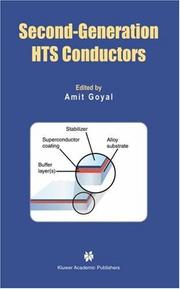
ISBN: 9781402081170 1402081170 1441954783 9786610612857 1402081189 1280612851 0387258396 Year: 2005 Publisher: Boston : Kluwer Academic Publishers,
Abstract | Keywords | Export | Availability | Bookmark
 Loading...
Loading...Choose an application
- Reference Manager
- EndNote
- RefWorks (Direct export to RefWorks)
The discovery of high temperature superconductors (HTS) in 1986 by two IBM scientists led to an unprecedented explosion of research and development efforts world-wide because of the significant potential for practical applications offered by these materials. However, the early euphoria created by the exciting prospects was dampened by the daunting task of fabricating these materials into useful forms with acceptable superconducting properties. Progress towards this goal has been hindered by many intrinsic materials problems, such as weak-links, flux-creep, and poor mechanical properties.
High temperature superconductors. --- Supraconducteurs à hautes températures --- Electrical Engineering --- Engineering - General --- Electrical & Computer Engineering --- Engineering & Applied Sciences --- Engineering. --- Physics. --- Magnetism. --- Magnetic materials. --- Materials science. --- Engineering, general. --- Characterization and Evaluation of Materials. --- Theoretical, Mathematical and Computational Physics. --- Magnetism, Magnetic Materials. --- Surfaces (Physics). --- Physics --- Surface chemistry --- Surfaces (Technology) --- Mathematical physics --- Electricity --- Magnetics --- Construction --- Industrial arts --- Technology --- Mathematical physics. --- Physical mathematics --- Material science --- Physical sciences --- Materials --- Mathematics --- Superconductors.
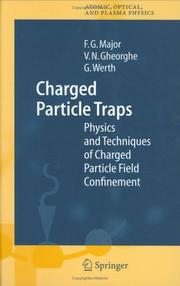
ISBN: 1280304928 9786610304929 3540265767 3540220437 3642060374 Year: 2005 Publisher: Berlin ; New York : Springer,
Abstract | Keywords | Export | Availability | Bookmark
 Loading...
Loading...Choose an application
- Reference Manager
- EndNote
- RefWorks (Direct export to RefWorks)
This book provides an introduction and guide to modern advances in charged particle (and antiparticle) confinement by electromagnetic fields. Confinement in different trap geometries, the influence of trap imperfections, classical and quantum mechanical description of the trapped particle motion, different methods of ion cooling to low temperatures, and non-neutral plasma properties (including Coulomb crystals) are the main subjects. They form the basis of such applications of charged particle traps as high-resolution optical and microwave spectroscopy, mass spectrometry, atomic clocks, and, potentially, quantum computing.
Plasma confinement. --- Electromagnetic fields. --- Trapped ions. --- Laser cooling. --- Cooling --- Ion trapping --- Ionic trapping --- Trapping of ions --- Ionic mobility --- Ions --- Fields, Electromagnetic --- Magnetic fields --- Electric fields --- Confined plasma --- Confinement of plasma --- Plasma, Confined --- Plasma containment --- Plasma control --- Plasma isolation --- Containerless processing --- Controlled fusion --- High temperature plasmas --- Pinch effect (Physics) --- Mechanics. --- Classical Mechanics. --- Nuclear Energy. --- Particle and Nuclear Physics. --- Atoms and Molecules in Strong Fields, Laser Matter Interaction. --- Plasma Physics. --- Atomic, Molecular, Optical and Plasma Physics. --- Classical mechanics --- Newtonian mechanics --- Physics --- Dynamics --- Quantum theory --- Nuclear energy. --- Nuclear physics. --- Atoms. --- Physics. --- Plasma (Ionized gases). --- Gaseous discharge --- Gaseous plasma --- Magnetoplasma --- Ionized gases --- Natural philosophy --- Philosophy, Natural --- Physical sciences --- Atomic energy --- Atomic power --- Energy, Atomic --- Energy, Nuclear --- Nuclear power --- Power, Atomic --- Power, Nuclear --- Force and energy --- Nuclear physics --- Power resources --- Nuclear engineering --- Nuclear facilities --- Nuclear power plants --- Chemistry, Physical and theoretical --- Matter --- Stereochemistry --- Atomic nuclei --- Atoms, Nuclei of --- Nucleus of the atom --- Constitution
| Listing 1 - 10 of 10 |
Sort by
|

 Search
Search Feedback
Feedback About UniCat
About UniCat  Help
Help News
News